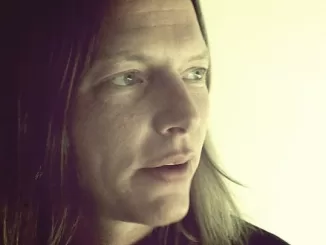Close your eyes and try to imagine who I’m talking about: He’s a likable New Zealander who directs epic fantasies that have stretched the boundaries of computer-generated effects and made more money than many small countries — nearly $1 billion worldwide.
And, oh yes, his name isn’t Peter Jackson.
That wasn’t so easy, was it? In the last couple of months, journalists have managed to write hundreds of thousands of words about Jackson, his 600-pound gorilla of a film and its precarious perch in box-office history. But when it comes to “The Chronicles of Narnia: The Lion, the Witch and the Wardrobe,” the monster hit that is now poised to become Disney’s highest-grossing live-action film ever, the man behind the movie — director Andrew Adamson — has managed to sail almost completely under the radar, despite having come to “Narnia” after co-directing “Shrek” and “Shrek 2,” two of the biggest animation hits of the decade.
Virtually every review of “Narnia” managed to dispatch Adamson’s contributions in about two sentences. The general tone was perhaps captured best by the Chicago Tribune’s Michael Phillips, who briskly observed that “Adamson (co-director of the first ‘Shrek’) has cast the four kids nicely.”
When I met the 39-year-old filmmaker the other day at a coffeehouse near his home in Silver Lake, he seemed genuinely unperturbed. “When you work in animation or the family film genre, you get very little acknowledgment, perhaps because in animation there’s usually two directors, which makes people dismiss the seriousness of our role.” He added with a grin, “Of course, not getting the attention means not getting the unwanted attention too.”
Long and lean with a wispy goatee and shoulder-length blond hair, Adamson has the air of an amiable first mate, not an imperious admiral. He was quick to note that when it came to being ignored, actors in family films suffer as much as filmmakers, pointing to Tilda Swinton’s stellar performance as “Narnia’s” icy White Witch. The actress earned heaps of critical praise, but no one saw the role as Oscar worthy the way a similar performance would be in a more adult-oriented drama.
“Nobody in the press, and, for that matter, in America really knows anything about the directors of animated pictures,” says “Narnia” producer Mark Johnson. “I suspect they don’t even think of them as being directed. The audience doesn’t know what an animation film director does, certainly not in the way that they know what Martin Scorsese or Woody Allen does.”
Adamson is too polite to make a big point of it, but working at Disney and DreamWorks, the home of “Shrek,” he has also been overshadowed by the studio brand, which takes precedent in the family film arena. After all, although it is Peter Jackson’s “King Kong,” it’s Disney’s “Chronicles of Narnia.”
“Animation is simply a team sport in a way that live action isn’t,” says DreamWorks’ Jeffrey Katzenberg, who is probably far more identified with his studio’s films than any of the projects’ directors. “When you work on a movie that takes five years to make, as with ‘Shrek,’ it’s a very different kind of collaborative enterprise.”
It would be wrong to assume that just because Adamson is no Capt. Bligh that he doesn’t exercise enormous control over the overall tone of his films. Hearing him describe his relationship with Katzenberg on the “Shrek” films, it is clear that their collaboration was often accompanied by a shower of sparks.
“You have to be very strong to work with Jeffrey,” Adamson says. “He’s like a pendulum, swinging back and forth, smashing things as he goes. Neither of us were afraid of confrontation, but we were always able to do it without insulting or disappointing each other. If you push back at Jeffrey, he’ll say, ‘OK, show me.’ And if you’re right, he’ll be the first to acknowledge it.”
On “Narnia,” Adamson had to please the legions of fans of C.S. Lewis’ books as well as Philip Anschutz, the press-shy billionaire who had obtained the rights to the series from Lewis’ estate and co-financed the film with Disney. At first, Adamson was reticent about getting involved at all, fearing Anschutz’s team wanted to modernize the story. As it turned out, everyone agreed the story should remain in its original World War II-era setting.
Although most critics praised Adamson for staying true to the book, he made a number of subtle changes, most important, shifting the emphasis from Aslan, the lion-in-exile ruler of Narnia, to the empowerment of the children, who enter Narnia through a magical wardrobe in their temporary wartime home. Adamson also made something of a leap in casting indie-film icon Swinton as the White Witch, sensing that the character had become something of a caricature after years of cackling, Cruella De Vil-style witches.
“I knew with Tilda that if I started going down the road to cliché that she’d lead me away,” he says. “To be honest, I was surprised she took the part. I knew she had to love what we were doing because she’s a mother, yet she knew she was going to be scary to children for the rest of her life.” Swinton confirms that her children have shown no interest in watching the movie.
However millions of other kids and their families have seen “Narnia,” often more than once. What are they responding to? So far the showbiz press has been far more interested in dissecting “King Kong” than figuring out why “Narnia” has touched such a responsive chord. Although there was considerable debate before the film’s release about its appeal to evangelicals, since Lewis clearly meant the story as a Christian allegory about the resurrection, it has reached a much broader cross section of moviegoers than just red state churchgoers. After all, “Narnia” is just as big a hit in Europe.
In fact, Adamson is quick to point out that a host of other films with similar resurrection narratives have reached a wide swath of filmgoers without attracting such intense scrutiny. “If you’re looking for a Christ figure, go see ‘The Matrix,’ ” he says. “Neo is the chosen one, he dies and comes back to life and saves the world. It’s a very clear resurrection myth tale, but no one asks the Wachowskis about that.”
“Narnia’s” global appeal seems rooted not only in its religious message and amazing computer-generated characters but also in its unabashedly traditional storytelling style. When I asked Katzenberg what sets Adamson apart as a filmmaker, he immediately said, “Andrew understands sentiment — he’s the one who gave a big green ogre a big heart.”
“Narnia” has something absent from most of today’s noisy, desperate-to-please family films — a sense of innocence. It’s a throwback to an earlier generation of Disney pictures that focused more on emotional redemption than frantic immediacy. The storytelling in “Narnia” has the gravitas of a timeless fairy tale, providing a much-needed antidote to the triteness and frenetic pacing of most animated films. It is also bracingly free of the barrage of pop-culture references that dominate so many animated films (notably Disney’s annoying “Chicken Little”), making them feel tacky and disposable, not to mention barely distinguishable from all of the slick, noisy ads that precede them on Saturday morning TV and in the theaters.
“Too many of the children’s movies I’ve seen lately make me feel as if I’m being pummeled around the head,” says Swinton. ” ‘Narnia’ is more magical because it is a little more old-fashioned. Even though Andrew was known as the king of special effects, on this movie it felt like 70% of the creatures in the film were people with rubber masks on their heads, not just CGI creations.”
In many ways, “Narnia” is also the latest in a series of films, from the “Lord of the Rings” and “Matrix” series to the “Spider-Man” and “Harry Potter” franchises, that represent the triumph of fantasy over drama.
Although the films were propelled in part by stunning advances in computer technology, they are even more clearly the reaction by otherwise disparate filmmakers to a culture bedeviled by an overdose of reality, both the grim reality you find on the news and the manufactured kind you see in so much of today’s entertainment TV programming.
Adamson, for one, admits that he doesn’t read newspapers or get TV at home, a result of his disgust with the exploitative nature of reality TV. “I just got offended by the way TV would turn tragedy into entertainment, and I didn’t want to be manipulated by it anymore. If people are more interested in fantasy right now, it may be because they wanted to get away from the ugliness of all that.”
Of course reality intrudes, even for fantasy filmmakers. After our chat was over, Adamson headed off to meet his wife and two small children. Even though his 2 1/2-year-old daughter had frolicked in the machine-generated white wonderland of the “Narnia” set, she was eagerly awaiting a family trip to Big Bear. It was time for Dad to show her some real snow.
Calendar Live


